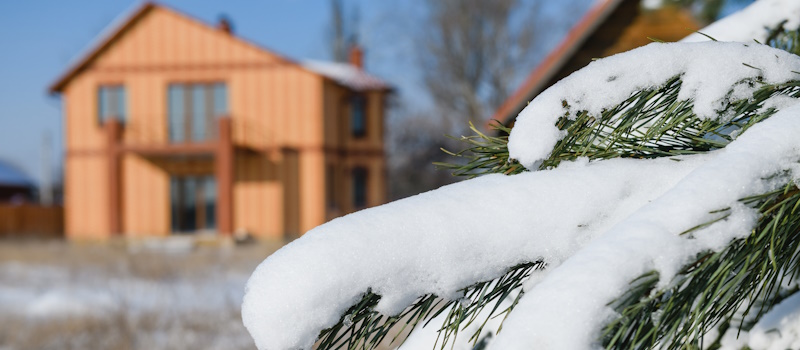Quick Guide To Winterizing Your Landscaping
Quick Guide To Winterizing Your Landscaping

Quick Guide To Winterizing Your Landscaping
Maintaining your gardens and yards through the winter helps ensure beautiful curb appeal and easier growing season come spring. As the weather shifts, it’s time to start preparing your yard. Here are tips for winterizing your yard this fall and winter.
When Should You Start Winterizing Your Yard?
Winterizing refers to the process of preparing your home, garden, and outdoor spaces to withstand the harsh conditions of winter. This proactive process ensures that things remain functional, efficient, and protected during cold weather. Here are some signs it’s a good time to winterize your home:
- Falling temperatures and frost
- Approaching winter storms or heavy snowfall
- Late autumn season (to prevent last-minute rushing)
- The majority of leaves falling from your trees
- The end of daylight saving time
- Before taking a fall or winter vacation
10 Ways To Winterize Your Yard
Winterizing your landscaping is essential to ensure your plants, lawn, and outdoor space survive the cold winter months and flourish again in spring. Here are some important tasks for properly winterizing your landscaping:
Cleaning Up Debris: Remove fallen leaves, dead plants, and debris from your garden and lawn. This prevents the growth of mold and diseases during winter.
Mulching: Use mulch around the base of trees and plants. Mulch acts as insulation, protecting the roots from extreme temperatures.
Watering Plants: Give your plants a deep watering before the first frost. This helps them stay hydrated during winter when natural water sources might freeze. You can also give your plants and lawn a good fertilizer to help feed them during the cold weather months.
Mowing the Lawn: Continue mowing your lawn until it stops growing. A slightly shorter grass height helps prevent diseases. Consider aerating and fertilizing your lawn for better growth in the spring. Also, mulch your leaves late in the season to provide nutrients to your yard and reduce landfill waste.
Storing Garden Tools: Clean and store your gardening tools properly at the end of the season. Dirt and moisture left on your tools can cause them to rust and dull.
Moving Potted Plants: Move potted plants indoors or to a sheltered area to protect them from freezing temperatures.
Inspecting Trees: Check trees for signs of disease or instability. Freezing temps and heavy snow can cause weak branches to become brittle and break.
Pruning: Trim back dead or overgrown branches from trees and shrubs. Proper pruning promotes healthy growth and prevents the destruction, sometimes exacerbated by heavy snow and ice. Pruning dead limbs can also prevent them from falling on your vehicle or home and causing damage.
Clearing Gutters and Drainage: Clean gutters and downspouts of the fallen leaves and debris that will get trapped throughout the summer and fall. Clogged gutters can create ice blocks and overflows that damage your roof, siding, or gutters.
Replacing Outdoor Lights: When daylight saving time ends, replace light bulbs in your outdoor fixtures. It’s a good idea to swap them out for energy-efficient bulbs before it gets cold to ensure they work throughout the winter months as it gets dark earlier. It’s a good idea to swap them out for energy-efficient bulbs before it gets cold to ensure they work throughout the winter months as it gets dark earlier.
